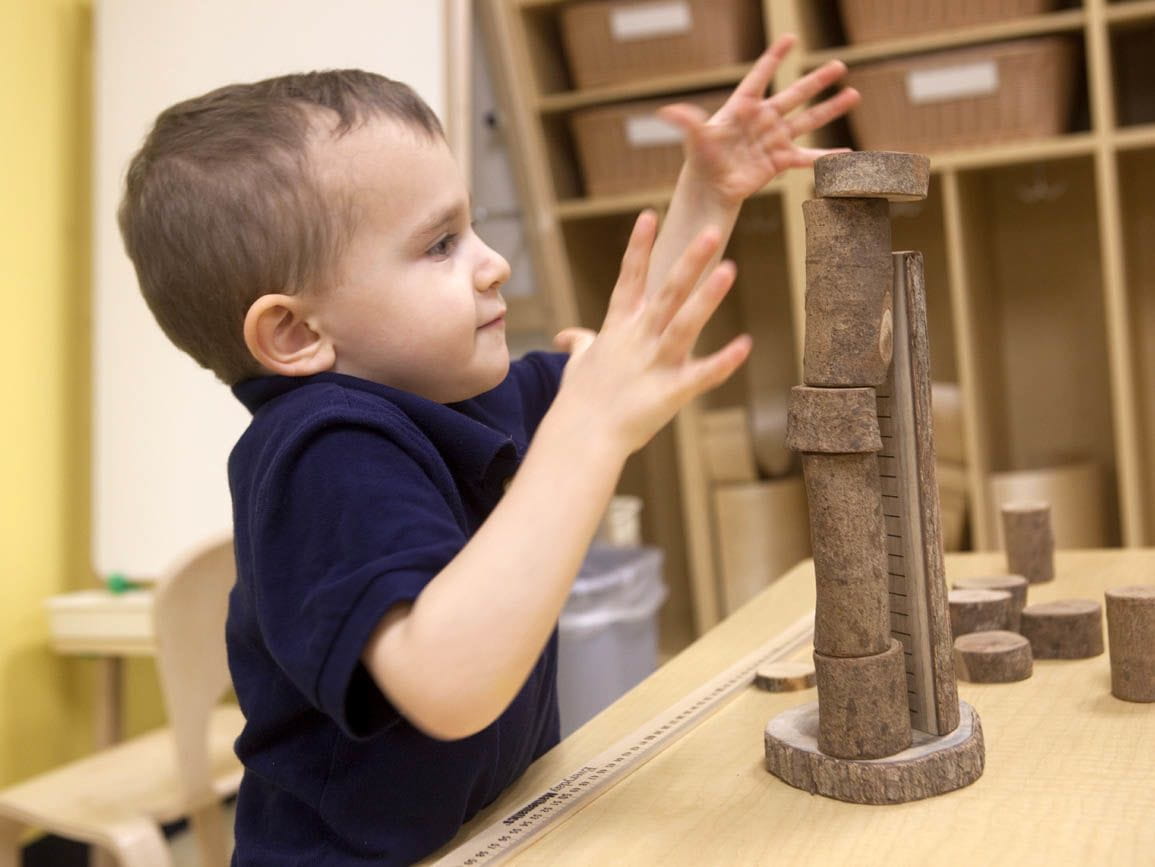STEM provides the tools to explore, question, and innovate. In this article, we will dive into the importance of STEM education, its foundational stages for infants and toddlers, and progress through preschool and beyond.
What is STEM for Kids?
STEM Education, a term initiated by the National Science Foundation, is an educational approach that focuses on one or more of the four disciplines of science, technology, engineering, and math.
In a 2017 report from the Early Childhood STEM Working Group, researchers from the Erikson Institute and UChicago STEM Education noted two important points:
- Early math proficiency predicts later math and literacy success better than early literacy proficiency does.
- Children with early exposure to STEM activities are more likely to pursue STEM learning later. These children are more confident and more likely to be successful in STEM disciplines.
Just as important, STEM learning is fun! It fosters important skills like critical thinking, problem-solving, and creativity. It’s never too early to introduce STEM to your child.
Benefits of STEM Learning for Kids
Stem offers a myriad of benefits for children, helping them develop essential skills for the 21st century and beyond. Here are some key advantages:
- Cognitive development: STEM fosters critical thinking, problem-solving, creativity, and curiosity.
- Career foundation: STEM skills are highly sought-after in today’s job market, providing students with a competitive edge.
- Personal development: STEM can boost self-confidence, resilience, collaboration, and leadership abilities.
- Real-world application: STEM equips children with the knowledge and tools to understand and address complex challenges
STEM Education for Infants and Toddlers
Infants are naturally creative and curious about their world, so give them plenty of opportunities to explore and learn through play. With close supervision, offer real objects like an apple or a squash, a shiny water bottle, or textured paper, which are much more interesting to the littlest learners than plastic toys and materials.
Toddlers are building a foundation of STEM skills simply by exploring their environments. They naturally attempt to solve simple problems, begin using objects as tools, and repeat actions to test out new ideas—all basic STEM skills. For example, when they throw their sippy cup off their highchair they observe where it will land, how fast it will fall, and what impact it has on the floor. They are being little scientists!
STEM Education for Preschoolers and School-agers
Continue to use scientific language to explore new STEM games and activities for preschoolers and school-agers:
- ”S” is for science. The basis for scientific discoveries is being a good observer. Help build strong observation skills in your child by playing games that include examination, such as “I Spy” or “20 Questions.” Go on a nature hunt or try birdwatching.
- ”T” is for technology. Show how to safely search the internet to find the answer to problems you are trying to solve.
- ”E” is for engineering. Offer building challenges that create STEM learning opportunities. Try building a tower with cups or make a bridge for plastic animals to walk over.
- ”M” is for math. Explain that patterns are displays that repeat themselves (can be natural or manmade). Help your child look for patterns in the world such as repeating numbers on a license plate or rings of wood on a cut tree trunk.
Think about childhood experiences that fostered your love of science. Was it a visit to the local creek to find frogs and salamanders, locating a bird nest and recording the mama bird’s activity, watching your mom fix the leak in the kitchen sink, or playing float and sink with the boats and other objects in the bathtub?
STEM activities do not require specific materials and processes; instead, STEM learning is about developing learning habits of inquiry and critical thinking skills. Children enjoy asking questions, exploring, and solving problems, but they need adults to facilitate their explorations and help them dig deeper.





